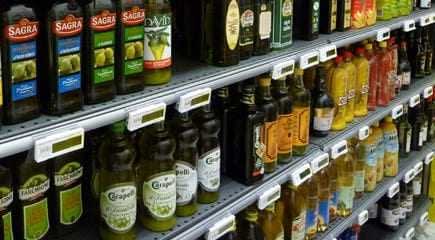
Debate over what information should appear on olive oil bottles — and how prominently — continues in Europe as the European Commission drafts promised new labeling laws.
The EC has not made its proposals public, but they are said to include rules on positioning and font size. For example, requiring details of origin to appear in the main visual field in text of at least 5 millimeters in the case of one-liter packages.
At the last meeting of its advisory group on olives and derived products, concerns were raised about the practicality of such moves.
According to draft minutes of the November 16 meeting, “the size under discussion was not considered appropriate in proportion to the amount of information required on the label.”
The minutes — recently obtained by Olive Oil Times under the EU transparency policy — went on to say: “As it was argued that the amount of mandatory information to be put on the main label was too large, a trade representative suggested that the important information should be defined first.”
“A representative of the producers argued that the origin of the product, as well as the other characteristics, were important but not needed on the label,” the minutes said.
Meanwhile, a consumer representative argued that all essential information should be of the same size, information on storage conditions should appear, and the packaging date be more explicit.
The minutes said it was agreed that the font size used for labels should be discussed further, “but the information presented should remain legible.” It was noted that the storage conditions of olive oil was considered important, and that the date of bottling and year of production would have to be discussed in more depth.
Differences in EC and IOC data queried
Amid discussion of provisional figures for the 2012/13 season, prices and exports trends, representatives of farmers, mills and consumers aired concerns about “inconsistencies” between the Commission’s data and that of the International Olive Council (IOC).
The consumer representative said such discrepancies should not occur “as both the Commission and IOC use data provided by governments.”
An EC representative said the Commission’s trade data is based on declarations by national authorities, but IOC balance sheets are based on sources additional to government estimates.
The point was also made that market outlook assessments depended largely on the timely-written contributions of relevant parties. “Stakeholders were invited to provide the data so that the statistics would reflect the market situation better,” the minutes noted.


